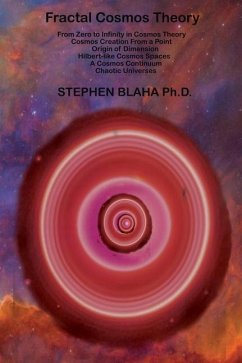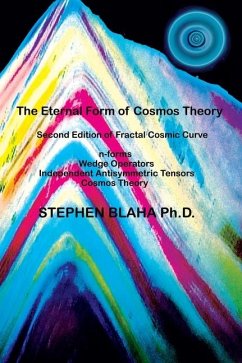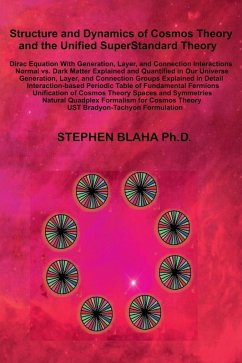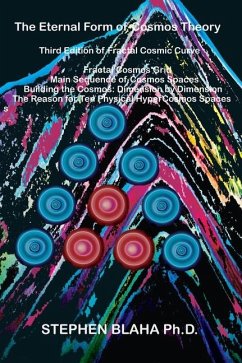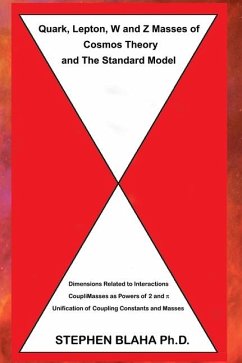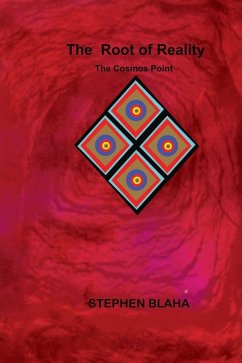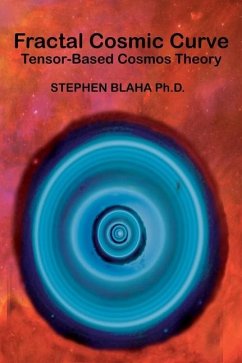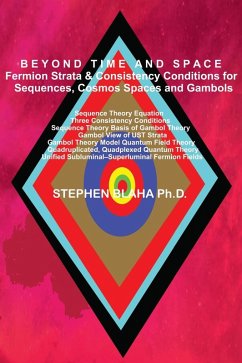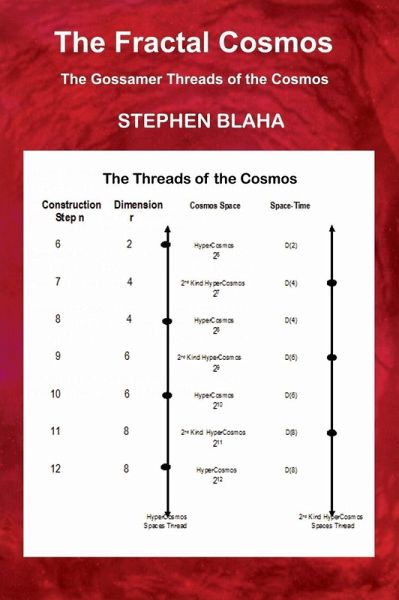
The Fractal Cosmos
Versandkostenfrei!
Versandfertig in über 4 Wochen
23,99 €
inkl. MwSt.

PAYBACK Punkte
12 °P sammeln!
This book extends the understanding of Cosmos Theory, as presented previously by the author, to a new deeper fractal formulation. Particles and interactions are now composed of fractals embodying growth from the infinitesimal to their form in Cosmos Theory. The author has previously suggested that Physics is a simulation - a Physical description of Reality based on the simple observation that a change in Physics theory does not cause a change in Reality. They differ except that Physics attempts to describe Reality. In that it mimics Reality, it is a simulation. This book shows that Physics as ...
This book extends the understanding of Cosmos Theory, as presented previously by the author, to a new deeper fractal formulation. Particles and interactions are now composed of fractals embodying growth from the infinitesimal to their form in Cosmos Theory. The author has previously suggested that Physics is a simulation - a Physical description of Reality based on the simple observation that a change in Physics theory does not cause a change in Reality. They differ except that Physics attempts to describe Reality. In that it mimics Reality, it is a simulation. This book shows that Physics as currently formulated, including Cosmos Theory as presented previously by the author, has a deeper, very different, formulation. This formulation effectively reduces all the fundamental components of Physics to fractal curves. This new view is a major step in understanding Physical phenomena. The parts of Physical theories had been viewed as "things" that exist in "bulk" particles with size and mass; interactions that are either present or not, and so on. The new fractal view is to treat components as composed of many fractional parts (fractals) that combine to give the components that appear in Physical theories. This reduction to fractals has the benefit of establishing continuity between a new level of infinitesimals and the components of current Physical Theories (including Cosmos Theory before now.) When one talks of the origin of components, it is more comfortable to see a gradual origin from infinitesimals rather than a magic origin through "popping" from nowhere. This view applies to current theory as well as to the origin of everything. The origin of the Cosmos appears to be understandable as a fractal generated from a zero dimension point - essentially nothing. We find the set of possible spaces is specified in the construction of a fractal curve from line segments. The Cosmos Fractal Curve has two strands - somewhat analogous to DNA. This book provides a new fractal paradigm for the inner nature of Physics theories. It is based on infinitesimals that provide a graceful infinitesimal "beginning" to a very large Cosmos. The "beginning" is a conceptual theorization of the Reality of a Cosmos that is without beginning or end. The new fractal formulation of Cosmos Theory is a new deeper simulation of the previous simulation, which was based on fundamental fermions, interactions, and boson fields. The previous simulation was ultimately based on The Standard Model and its extensions. The depth of the new fractal simulation solidifies the view that Physics is a simulation - composed of a fractal simulation within the conventional Physical simulation. We will see that the fractal form of Cosmos Theory gives results previously found and adds a new deeper level of features. Some new results are: fractal arithmetic combinations used in Physics applications, a more detailed form of the Cosmos fractal curve that is double stranded, and the transformation of fermions and interactions into a fractal form.



